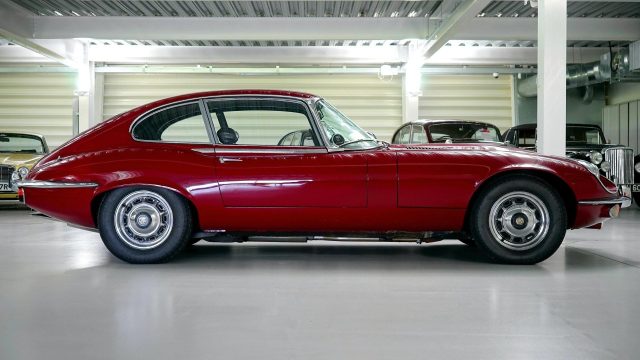The cars we drive are extensions of ourselves. They say something about our lifestyles, our desires, and even our wallets.
Since the birth of the automobile in 1886 with Carl Benz’s patent for his “vehicle powered by a gas engine,” car culture around the world has continuously evolved with the times, with hybrid, all-electric, and autonomous vehicles slowly gaining traction.
But we can’t talk about car culture without mentioning some of the world’s best classic cars. Take the 1967 Chevy Corvette, the Jaguar E-Type, and the 1966 Lamborghini Miura, for example.
These vehicles combined luxury with some of the latest automobile technologies of their times, creating inventions that both casual and hardcore car enthusiasts look back on fondly.
Let’s dive deeper into classic car culture around the world.
The Classic American ‘Donks’
Let’s start with some of the classic car culture the U.S. has to offer. You may have seen a “donk” without knowing what it was called. A “donk” generally refers to vintage vehicles from the 70s, 80, and 90s fitted with large, oversized wheels resembling something you might see at a monster truck rally.
But the truth is, to hardcore car enthusiasts especially, a donk specifically refers to the full-sized Chevrolet models between 1971 and 1976 that received this big-wheel treatment. These Chevys compromise nearly 75% of all donks you’ll see on the road.
This type of vintage car is elevated with oversized rim and lift kits, and some rise as far up as eight feet off the ground. Imagine that: a Chevrolet cruiser that looks like it could avoid traffic by simply driving right over everyone else.
The Italian Alfa Romeo 6C 2500
Ferrari and Pagani usually dominate conversations around Italian cars, but apart from its bustling tourist industry, Italy was known for producing some phenomenal post-war collectibles soon after the end of World War II.
The Alfa Romeo 6C 2500 was one of the last cars recognized by the Classic Car Club of America and one of the Milestone Car Society’s first postwar nods to Italy.
Something unique about the Alfa Romeo 1947 model was its odd three-passenger front bench and two-passenger rear bench. The steering column was mounted on the right-hand side of the vehicle, calling for extra coordination on part of the model’s drivers, and the chassis of the vehicle itself was narrower in the rear than it was in the front.
The Alfa Romeos are especially known for their luxurious interiors, jewel-like instruments, and leather upholstery. Indeed, this Italian masterpiece deserves an honorable mention in our list of the best classic cars around.
The French Citroën 2CV
Many of the French Citroën’s first onlookers criticized the design of this classic French automobile first presented at the Paris Show in 1948, claiming it to look more like a sardine can than a vehicle.
Citroën first started working on this car in the late 1930s but tabled the design out of fear that Nazi Germany, after its invasion of France, would find and seize it.
When the war ended, Citroën went right back to it and finished the 2CV design in time for the 1948 Paris Show, receiving harsh critiques from those claiming its paint job reminded them of dreary hospital environments and its suspension of a children’s swing set.
Nonetheless, motorists still began purchasing and driving the 2CV, and the model would last several decades after its original release until 1990.
Britain’s Jaguar E-Type
If you’ve seen the show Mad Men, you probably remember the episode where Don Draper’s advertising agency landed the Jaguar account. It was a memorable episode indeed, but the Jaguar E-Type was a real thing.
Designed by British automobile designer Malcolm Sayer, the E-Type was manufactured by Jaguar Cars Ltd. between 1961 and 1975. The car is a classic cherished by many around the world and considered one of the most beautifully alluring vehicles of all time.
The E-Type is responsible for affecting many components of car manufacturing: The car reached top speeds of up to 150 mph and possessed unitary construction and rack-and-pinion steering. But it lacked the ladder frame chassis that was commonly found in other vehicles of its time.
These innovations caught the attention of competitors like Porsche and Toyota who were also designing competitively innovative sports cars at the time.
The E-Type’s novel design and notable legacy continue to inspire designers and engineers today.
Other Honorable Mentions
We’ve covered what some can argue to be some of the most popular (and controversial, in the case of the 2CV) vehicle designs of all time. Now, let’s dive into some other honorable mentions.
The Japanese Toyota Corolla GT AE86
It would take more than a simple article about classic car culture to give the GT AE86 the attention it deserves. The Corolla GT AE86 won the European Touring Car Championship in 1988 for its jaw-dropping drift and fiercely competitive racing abilities.
One of the greatest Japanese drifters of all time, Keiichi Tsuchiya (also known as the “Drift King”), owes his legacy to the GT AE86.

The GT AE86 features 112 horsepower, a top speed of 118 mph, and goes 0 to 60 mph in approximately 8.6 seconds.
The Lamborghini Miura
Produced between 1966 and 1973, the Lamborghini Miura was the first supercar to feature a rear mid-engine, two-seat layout, setting the standard for high-performance supercars. At the time of its release, the Miura was the fastest production road car on the market.
An interesting fact about the Miura is that it was actually conceived against the wishes of founder Ferruccio Lamborghini. The engineering team at Lamborghini came up with the idea for the revolutionary supercar when Ferruccio preferred grand touring cars over race cars.
Their competitor, Ferrari, was producing much of the latter at the time, and Ferruccio wanted nothing to do with it.
Soon after, 1966 rolled around and the Miura debuted at the 1966 Geneva Motor Show, receiving exceptionally favorable reviews. The car would stay in production until 1973.
The Porsche 911
The 1974 to 1989 models of the Porsche 911 turned out to be some of the most durable and well-made vehicles of their time. The 911 was designed with practicality in mind, featuring seats for children and enough luggage space for the casual traveler.
The car was designed for skilled drivers at a time when the latest European technologies were finding their way into the latest vehicles. When the 1980s broke, the 911 was designed with a focus on everyday usability rather than shockingly fast speeds and turbo capabilities.
To this day, the 1980 to 1989 models of the 911 still remain usable, enjoyable, and collectible. You will want to research how much auto insurance you’ll need when driving these expensive vehicles.
 Luke Williams writes and researches for the car insurance site, CarInsuranceComparison.com. His passions include writing about personal finance, insurance, classic cars, and other ways people can save money, spend better, and drive with peace of mind.
Luke Williams writes and researches for the car insurance site, CarInsuranceComparison.com. His passions include writing about personal finance, insurance, classic cars, and other ways people can save money, spend better, and drive with peace of mind.







